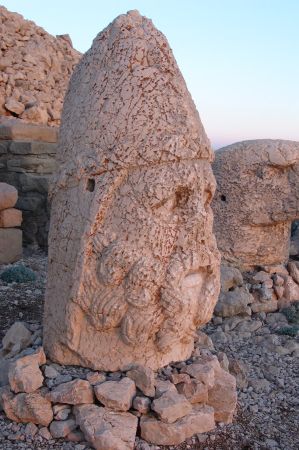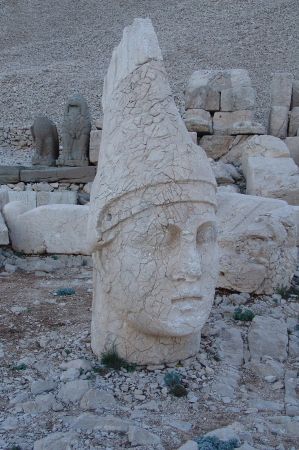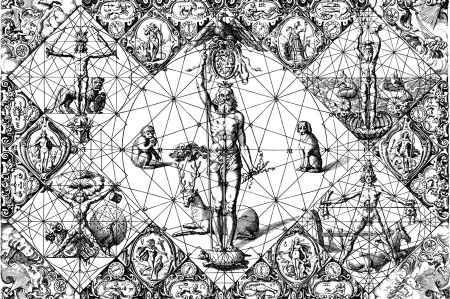Süphan Dağı – Mountain of the Gods of the Urartians
- Written by Portal Editor
We have already reported several times about the relationship of the people in Anatolia to high mountains, whose imagination of nature resulted in mountains becoming something divine, inexplicably large and powerful.
This also applies in the broadest sense to the Süphan Dağı, because the Urartian people already brought animal sacrifices to the mountain, which was called Eidoru in the Urartian language, because they worshiped it as a “god”.
Weather god Teiseba and the sun god Siuini.
 With the discovery of the hitherto most important source of information on the Urartian religion, the so-called Meher Kapısı or Mheridur, a long inscription that has survived twice was identified as an Urartian Haldi sanctuary. Kings Menua and Išpuini had already written this inscription around 820 BC, which provided the sanctuary in the form of a niche with the term "Kapısı" (Turkish for door). The most important gods of the Urartians are listed in the inscription, such as the kingdom god Haldi, the weather god Teiseba and the sun god Siuini. Other local deities are named Adia, Aja, Anapsa, Arubaini, Baba, Dieduani, Inuani, Hutuini, Nalaini and Ua, for a total of 79 of these "divine beings". It is probable that animal sacrifices in the form of cattle and sheep were made on the terrace below Meher Kapısı, the mountain is always the recipient of the offerings. Also in the Rusahinili Eidorukai Fortress, which lies in front of Mount Eiduro, an inscription was found by a certain Rusa, son of Argisti, which tells of the animal sacrifices to the mountain. (Pictures show Gods of Nemrut)
With the discovery of the hitherto most important source of information on the Urartian religion, the so-called Meher Kapısı or Mheridur, a long inscription that has survived twice was identified as an Urartian Haldi sanctuary. Kings Menua and Išpuini had already written this inscription around 820 BC, which provided the sanctuary in the form of a niche with the term "Kapısı" (Turkish for door). The most important gods of the Urartians are listed in the inscription, such as the kingdom god Haldi, the weather god Teiseba and the sun god Siuini. Other local deities are named Adia, Aja, Anapsa, Arubaini, Baba, Dieduani, Inuani, Hutuini, Nalaini and Ua, for a total of 79 of these "divine beings". It is probable that animal sacrifices in the form of cattle and sheep were made on the terrace below Meher Kapısı, the mountain is always the recipient of the offerings. Also in the Rusahinili Eidorukai Fortress, which lies in front of Mount Eiduro, an inscription was found by a certain Rusa, son of Argisti, which tells of the animal sacrifices to the mountain. (Pictures show Gods of Nemrut)
Süphan Dağı is only surpassed in height by the Ararat
As a former stratovolcano with an impressive height of 4,058 meters, which last erupted around 8,000 BC, the mountain Süphan Dağı on the north shore of Lake Van is already an impressive sight. The summit is covered with snow all year round, so that it can be seen from afar. Within a radius of 200 kilometers, the Süphan Dağı is only surpassed in height by the Ararat with 5,137 meters.
Since the Neolithic, black, very homogeneous obsidian has been mined on the volcanic mountain Süphan Dağı, which is processed into vessels, tools, jewelry and sometimes weapons. Up to Arslantepe near Malatya layers with obsidian as a component can be detected. Obsidian is formed when flowing water meets lava in a mass ratio of max. 3-4 percent water, which contributes to the rapid cooling of the lava. If the proportion of water were higher or if other volatile substances such as CO2 were present, the lava would expand into pumice when it cooled down more quickly. Obsidian is therefore not a mineral but a glass due to its amorphous, irregular crystal structure. Allegedly, the name Obsidian can be traced back to a Roman named Obsius, who is said to have brought obsidian from Ethiopia to Rome for the first time.
Recommended time to climb Süphan Dağı
 Today, the Süphan Dağı is a popular destination for mountaineers as it offers a fantastic view over the eastern Taurus and the upper reaches of the Euphrates. Tour guides offer guided ascents, most of which reach the summit from the east side. The recommended time to climb Süphan Dağı is June to September. There is excellent visual contact with Lake Van throughout the climb. An overnight stay in a camp at 3,200 meters is usually sufficient, since Lake Van itself is already 1,600 meters above sea level.
Today, the Süphan Dağı is a popular destination for mountaineers as it offers a fantastic view over the eastern Taurus and the upper reaches of the Euphrates. Tour guides offer guided ascents, most of which reach the summit from the east side. The recommended time to climb Süphan Dağı is June to September. There is excellent visual contact with Lake Van throughout the climb. An overnight stay in a camp at 3,200 meters is usually sufficient, since Lake Van itself is already 1,600 meters above sea level.
Please read as well:
